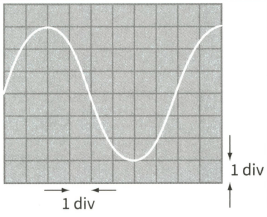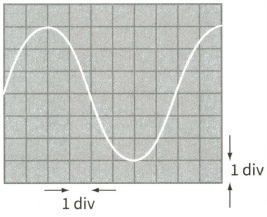The alternating current I in ampere (A) in a circuit is represented by the equation . Sketch a graph to show two cycles of the variation of current with time. Mark the axes with suitable values.

Important Questions on Alternating Currents
The alternating current I in ampere (A) in a circuit is represented by the equation , then calculate the r.m.s. value of current, and mark this on your graph in part c.
The alternating current I in ampere (A) in a circuit is represented by the equation . Determine two values of time at which the current .
A heater of resistance 6.0 n is connected to an alternating current supply. The output voltage from the supply is 20V r.m.s. Calculate the average power dissipated in the heater.
A heater of resistance 6.0 n is connected to an alternating current supply. The output voltage from the supply is 20V r.m.s. Calculate the maximum power dissipated in the heater.
A heater of resistance 6.0 n is connected to an alternating current supply. The output voltage from the supply is 20V r.m.s. Calculate the energy dissipated by the heater in 5.0 minutes.
An oscilloscope is used to display the variation of voltage across a resistor with time. The trace is shown. The time-base of the oscilloscope is set at and the -gain at .

Determine the period and hence the frequency of the alternating voltage.
An oscilloscope is used to display the variation of voltage across a resistor with time. The trace is shown. The time-base of the oscilloscope is set at and the -gain at .

Determine the peak voltage and hence the r.m.s. voltage.
An oscilloscope is used to display the variation of voltage across a resistor with time. The trace is shown. The time-base of the oscilloscope is set at and the -gain at .

Determine
(c) the r.m.s. current in the resistor
